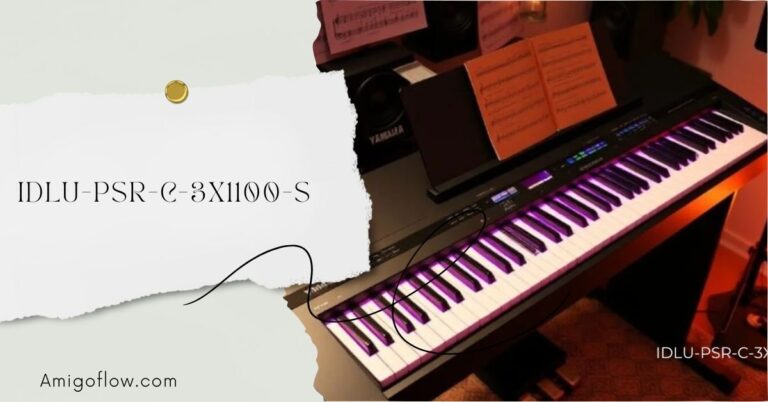In aerospace engineering, ensuring the safety and efficiency of structures under dynamic conditions is a top priority. Engineers must understand how aircraft respond to various aerodynamic forces, such as gusts, vibrations, and flutter.
One key tool used to achieve this is Nastran Solution 146, a specialized solver in MSC Nastran software that focuses on aeroelastic analysis. Paired with the MONPNT1 card and RMS (Root Mean Square) analysis, this solution provides a powerful approach for analyzing dynamic loads and their effects on structures, helping engineers design safer and more efficient aircraft.
In this article, we will dive deep into Nastran Solution 146 MONPNT1 RMS and explain how these tools can be used in dynamic aeroelastic analysis.
What is Nastran?
Before getting into the details of Solution 146, it’s essential to understand what Nastran is. Nastran, short for NASA Structural Analysis, is a powerful simulation software that engineers use to predict the behavior of structures under various loads. Originally developed by NASA, it has become a go-to tool for analyzing everything from bridges to airplanes, cars, and spacecraft.
What Makes Nastran Unique?
- Multidisciplinary Capabilities: Nastran can simulate different types of loads, including mechanical, thermal, and aerodynamic, making it versatile across industries.
- Advanced Aeroelastic Analysis: With features like Solution 146 and RMS analysis, Nastran is especially useful in the aerospace industry.
- Highly Customizable: Engineers can input complex models and define specific parameters such as load points, making Nastran adaptable for a variety of analysis types.
Introduction to Nastran Solution 146
Nastran Solution 146 is a specific module within Nastran software designed for aeroelastic analysis. It is particularly useful when dealing with problems related to the interaction between a structure (like an airplane wing) and the airflow around it. This interaction can lead to dynamic phenomena such as flutter, gust response, and other vibration-related issues.
Key Features of Solution 146:
- Flutter Analysis: Helps predict the flutter speed, where the structure becomes unstable due to aerodynamic forces.
- Gust Response: Analyzes how the structure behaves when subjected to sudden aerodynamic loads like wind gusts.
- Dynamic Load Interactions: Provides detailed insights into how different dynamic loads interact with the structure over time.
Understanding the MONPNT1 Card
The MONPNT1 card is an essential component in Nastran Solution 146. It is used to monitor specific points on the structure during the analysis. Think of it as a sensor that collects data at critical locations on the aircraft or structure, such as the wing tip or fuselage.
What Does MONPNT1 Do?
- Point Monitoring: The MONPNT1 card tracks the response of selected points on the structure under dynamic loads.
- Frequency Response: It helps analyze how different parts of the structure respond to varying frequencies, which is critical in determining the structural integrity during flight conditions.
- Integration with RMS: The data collected by MONPNT1 is crucial for conducting Root Mean Square (RMS) analysis, helping to assess the magnitude of vibrations and oscillations over time.
RMS Analysis in Nastran Solution 146
RMS (Root Mean Square) is a statistical method used to measure the magnitude of varying quantities, especially when dealing with oscillations, vibrations, or dynamic forces. In the context of Solution 146, RMS analysis helps in understanding the overall energy or intensity of dynamic forces acting on the structure.
Why is RMS Important?
- Quantifies Dynamic Loads: RMS gives engineers a numerical value that represents the overall magnitude of fluctuating loads, such as vibrations caused by airflow over a wing.
- Design Safety: By understanding these loads, engineers can design structures that are less prone to failure due to fatigue or excessive stress.
- Long-Term Performance: RMS analysis helps predict how a structure will perform over time, especially when subjected to repetitive or cyclic loads like gusts and turbulence.
How Does Nastran Solution 146 MONPNT1 RMS Work Together?
When you combine Nastran Solution 146, the MONPNT1 card, and RMS analysis, you get a comprehensive toolset for understanding how dynamic loads affect aerospace structures. This combination allows engineers to:
- Identify Critical Points: Using MONPNT1, engineers can pinpoint areas on the structure that are most affected by dynamic forces.
- Analyze Dynamic Responses: Solution 146 provides a detailed analysis of how these points respond to aeroelastic phenomena like flutter or gusts.
- Quantify the Effects: Through RMS analysis, engineers can determine the intensity of these forces, allowing them to make informed decisions about the structural design.
Step-by-Step Process for Using Nastran Solution 146 MONPNT1 RMS
Let’s walk through the basic steps that engineers follow when performing an analysis using these tools:
Step 1: Set Up the Model
The first step is to create a detailed model of the aircraft or structure you want to analyze. This includes defining the material properties, structural geometry, and boundary conditions. You’ll also need to specify the aerodynamic forces that will be acting on the structure.
Step 2: Apply MONPNT1 Cards
Next, you need to define the MONPNT1 cards. These cards are used to monitor specific points on the structure, such as the wingtip or tail. The more critical points you monitor, the more detailed your analysis will be.
Step 3: Run the Analysis Using Solution 146
Once the model is set up and the monitoring points are defined, you can run the analysis using Nastran Solution 146. This solution will simulate how the structure responds to aerodynamic forces over time, considering factors like airflow, vibration, and flutter.
Step 4: Perform RMS Analysis
After the analysis is complete, the next step is to perform RMS analysis on the collected data. This will give you an idea of the overall magnitude of the dynamic forces acting on the structure, allowing you to assess the long-term performance and safety of the design.
Step 5: Review and Optimize
Finally, based on the results of the RMS analysis, you can identify areas where the design may need to be optimized. For example, if certain parts of the structure experience excessive vibrations, you might need to reinforce those areas or alter the aerodynamic shape to reduce the loads.
Applications of Nastran Solution 146 MONPNT1 RMS in Aerospace Engineering
In the aerospace industry, the use of Nastran Solution 146 MONPNT1 RMS is widespread. Let’s explore some common applications:
1. Aircraft Wing Design
Aircraft wings are subjected to a wide range of dynamic forces during flight, from wind gusts to turbulence. Engineers use Solution 146 to analyze how the wing responds to these forces and to ensure that it won’t experience flutter, which can lead to catastrophic failure.
2. Gust Load Analysis
One of the primary concerns in aircraft design is how the aircraft will handle sudden changes in wind speed, known as gusts. Solution 146 MONPNT1 RMS allows engineers to simulate these scenarios and evaluate how different parts of the aircraft respond.
3. Flutter Analysis
Flutter is a dangerous phenomenon where the structure becomes unstable due to the interaction between aerodynamic forces and the structure’s natural frequency. Solution 146 helps predict the flutter speed, allowing engineers to make design changes before any issues arise during actual flight.
4. Spacecraft and Satellite Design
In the aerospace industry, even spacecraft and satellites need to be designed with dynamic forces in mind. Solution 146 can be used to analyze how these structures will behave in space, where they might be subjected to vibrations and oscillations caused by factors such as launch or gravitational forces.
Advantages of Using Nastran Solution 146 MONPNT1 RMS
The combination of Solution 146, MONPNT1, and RMS analysis offers several key benefits for engineers and designers:
- Enhanced Safety: By accurately predicting dynamic responses, engineers can design safer aircraft and spacecraft.
- Increased Efficiency: The detailed analysis allows for the optimization of structural components, reducing weight and improving fuel efficiency without compromising safety.
- Cost-Effective Design: By identifying potential problems early in the design process, manufacturers can avoid costly redesigns or structural failures later on.
- Long-Term Durability: RMS analysis helps ensure that structures are designed to withstand dynamic loads over long periods, improving their lifespan and performance.
Common Challenges and Solutions in Nastran Solution 146 MONPNT1 RMS Analysis
While Nastran Solution 146 MONPNT1 RMS provides powerful tools for dynamic analysis, engineers may face certain challenges when using them. Here’s how to address some of these common issues:
Challenge 1: Complex Models
Aircraft and spacecraft models can be incredibly complex, with thousands of individual components. This can make the analysis process time-consuming and prone to errors.
Solution: Simplify the model where possible without compromising the accuracy of the analysis. Use techniques such as mesh refinement only in critical areas and apply boundary conditions strategically to reduce computational load.
Challenge 2: Interpretation of RMS Results
Interpreting the results of RMS analysis can be tricky, especially for those new to dynamic analysis.
Solution: Provide training and resources for engineers to better understand how to interpret RMS results. Visual aids, such as graphs and animations, can help convey complex data more clearly.
Challenge 3: Integration with Other Software
Often, engineers need to integrate Nastran with other simulation tools, which can lead to compatibility issues.
Solution: Ensure that you are using the latest versions of software and consult technical support for integration issues. Having a clear understanding of data formats and workflows can also streamline this process.
FAQs About Nastran Solution 146 MONPNT1 RMS
1. What is the primary purpose of Nastran Solution 146?
Nastran Solution 146 is primarily used for dynamic aeroelastic analysis, helping engineers understand how structures behave under aerodynamic loads.
2. How does MONPNT1 improve the analysis process?
The MONPNT1 card allows engineers to monitor specific points on a structure, providing valuable data on its response to dynamic loads.
3. Why is RMS analysis important in aerospace engineering?
RMS analysis quantifies the overall magnitude of dynamic loads, helping engineers design structures that are safe and efficient under varying conditions.
4. Can Nastran Solution 146 be used for non-aerospace applications?
While it is primarily designed for aerospace applications, the principles of aeroelastic analysis can also be applied to other fields that involve dynamic loads, such as civil engineering.
5. What skills are needed to use Nastran effectively?
A solid understanding of structural mechanics, fluid dynamics, and finite element analysis (FEA) is essential to effectively use Nastran and interpret its results.
Conclusion
Nastran Solution 146 MONPNT1 RMS is an invaluable tool in the field of aerospace engineering, providing detailed insights into dynamic aeroelastic phenomena. By understanding how structures respond to aerodynamic forces, engineers can design safer, more efficient aircraft and spacecraft. The integration of these tools facilitates a comprehensive approach to dynamic analysis, enabling engineers to address potential issues before they arise.















